8. The House That Jack Built
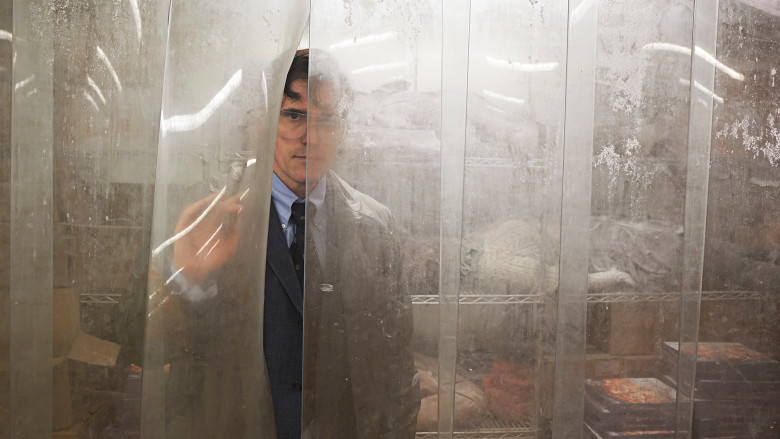
In recent years it seems like Danish filmmaker Lars von Trier’s brand has become one of polarization. Seeing The House That Jack Built at a film festival, well ahead of the film’s wide release, I wasn’t surprised that the majority of attendees seated around me got up and left in outrage around the time Jack (Matt Dillon, excellent) performed his macabre mastectomy on a fraught young woman named Simple (Riley Keough)––a sordid leaf torn from Jack the Ripper’s libretto.
Occupying a 12 year span during the 70s and 80s in the Pacific Northwestern United States––an area traditionally thought to be a hotbed for serial killer activities––the film follows the career of our titular murderer, sometimes referred to as “Mr. Sophistication”.
As Jack leads the viewer down an ever-swirling quagmire of obscenity and slaughter, he shares a back and forth with an almost unworldly figure named Verge (Bruno Ganz)––a perhaps too obvious sobriquet that bluntly suggests he’s Virgil to Jack’s Dante on a tour through Hell and Purgatory.
The film is a self-consciously reflexive, self-defeating, convention-crushing, neo-slasher that will reward the right kind of viewer with its masterful mesh of allusions, pitch-dark designs and dismayed poetry.
7. A Quiet Place
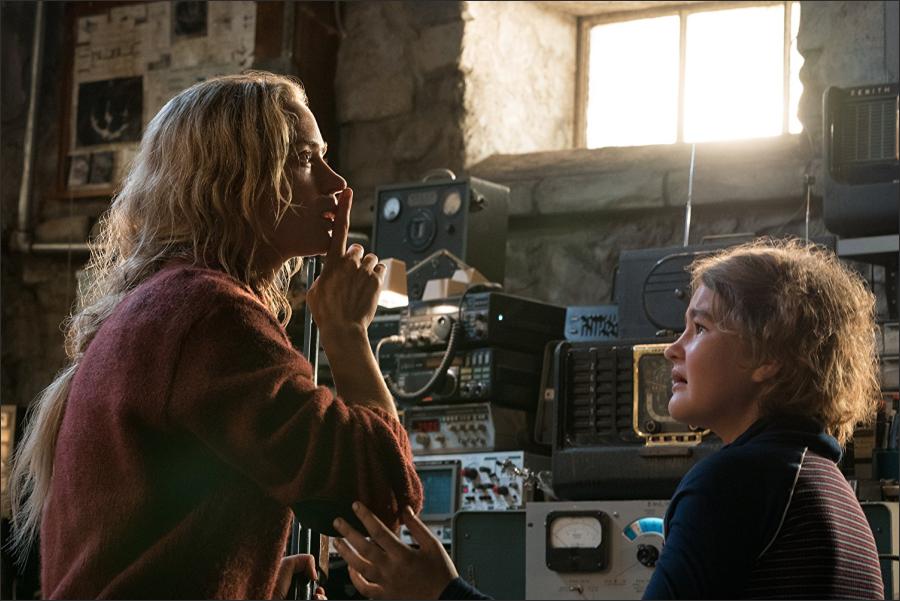
A menacing horror movie set in a pitilessly silent world, director John Krasinski’s latest film A Quiet Place is also a fine sample of smart sci-fi, solidly backed by arresting human drama.
Written by the genre specialists/screenwriting duo of Scott Beck and Bryan Woods (Nightlight [2015]), Krasinski, who further developed the screenplay with them, also co-stars along with brilliant actress and wife Emily Blunt. Unraveling in an eerie, post-apocalyptic world where childhood innocence, family life, and joy have been swept away by hard-to-fathom ferocity and intense fear.
While being economically sparing with the details, A Quiet Place is immediately open about its premise. In a not-too-distant future a race of mean, massive, unmanageable, multi-appendaged spider-like monsters have appeared. In this bleak tomorrow, the scant survivors have to adapt to a world of deliberate silences. Such are the Abbott family, Lee (Krasinski) and Evelyn (Blunt), who along with their three young children—sons Marcus (Noah Jupe) and Beau (Cade Woodward), and deaf daughter Regan (Millicent Simmonds)—have turned their remote farmhouse and environs into an efficacious survivalist ranch.
A Quiet Place will be forever remembered for its brilliant use of sound (see the next section of this list for more detail on this), but it would be folly to overlook the numerous and many clever and well-executed tableaus that Krasinski and Charlotte Bruus Christensen capture on camera, that help bring the dynamic sound design to brilliant, and nail-biting life. Genre fans, rejoice!
6. Cam
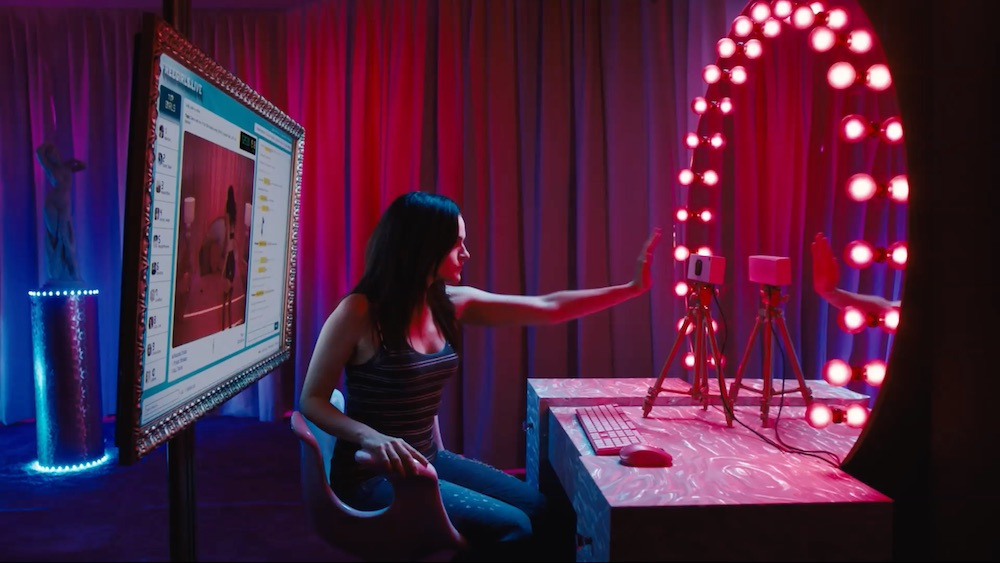
Cam toys and twists with psychological-horror tropes while shrewdly messing with darker existential ideas in a wonderfully impressive debut from director Daniel Goldhaber and screenwriter Isa Mazzei.
The often episodic story, drawn from Mazzei’s own past experiences as a camgirl (a video performer who uses a live webcam to stream often erotic and subversive content on the Internet), follows up-and-coming camgirl Alice Ackerman aka Lola (Madeline Brewer, fantastic). It’s not long before Alice discovers that her Lola persona has inexplicably and eerily been replaced on her site with a doppelgänger.
As Alice searches for whomever has hacked her and tries to figure out the nature of her dead ringer proceedings grow all the more frantic and fucked up. Goldhaber advances this tale cleverly, with developments both evocative and inventive, and all of it graced by Brewer’s herculean performance, essentially a dual one that can swing from seductively sexy to panicked and undone in the bat of a lash.
Whatever Goldhaber and Mazzei have in store for genre fans next will be enticing and exciting to see, let’s hope we won’t have to wait too long.
5. Annihilation
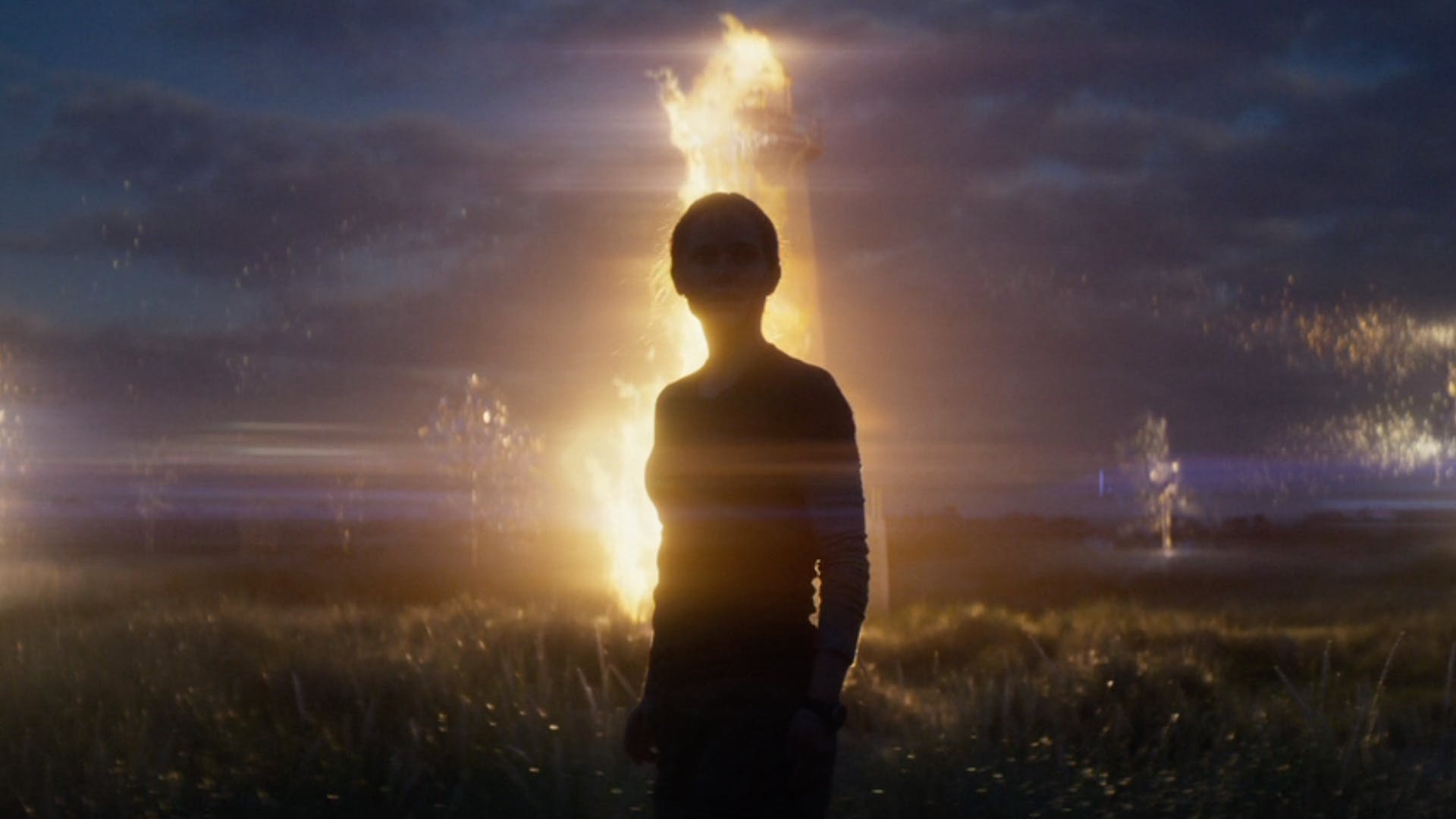
Profoundly unsettling and deeply imaginative, Alex Garland’s Annihilation, adapted from the first book in Jeff VanderMeer’s brilliant best-selling “Southern Reach Trilogy” (2014), presents adventurous viewers with a frequently hypnotic and sporadically heady miscellany of grandiose ecological parable and nerve-racking survival tale in a deep sci-fi skien.
Lena (Natalie Portman), a grieving biology professor and former U.S. Army soldier, is part of an all-female reconnaissance outfit sent into a top secret stretch of North American coast where something alien has altered the environment and nature has gone berserk; plantlife has grown into gorgeous and sinister floral forms and humanlike shapes; mutated beats, some seeming prehistoric, others like a Miyazaki fever dream, travel the timbers and marshlands down the coast.
This environmental territory, with startling shades of Chernobyl and Fukushima Daiichi, is in a frightening flux as its boundaries keep mushrooming. Lena and the rest of her unit, not at all the first reconnaissance team to lose their way trying to penetrate this strange southern zone, startlingly realize that their mental and emotional faculties are also socked in and uncertain.
Annihilation is a world of weird fiction; of dead husbands and daughters, of doppelgängers, waking dreams, monstrous rogue bears capable of ghastly human mimicry, mutated hyacinths that scion to the skin, and far more menacing eventualities that disquiet and demolish the human mind.
4. Climax

Argentinian enfant terrible filmmaker Gaspar Noé (Enter the Void [2009]) may now at long last finally have his masterpiece with Climax, an unimaginably beautiful nightmare mixture of ecstatic dance and horror most extreme. An absolutely mindblowing, and occasionally frustrating experience, Climax is as detailed and delirious as an Hieronymus Bosch hellscape.
Part Busby Berkeley’s dance numbers in 42nd Street and part Pier Paolo Pasolini’s depraved Salò, the film hits its dizziest height early, and intentional joke or not, it does seem to prematurely pop.
After a hasty, though fairly engaging introduction to our cast of characters, members of a hip-hop dance troupe in 1996, we witness a whirlingly choreographed dance sequence in their rehearsal space, set to pulsating era-appropriate EDM and shot in a single, staggering, trance-inducing take.
To say that it’s riveting feels too basic, it’s an all-consuming feat of strength, and probably the most engrossing dance number you’ve ever borne witness to. So many different dancing styles coalesce; krumpers, voguers, and wackers, and all with an astounding fluidity, energy, and grace, it’s druggy just to take it all in. Wow.
But before long the film moves from Saturday Night Fever-style dance drama to full-on drug horror as the troupe comes to realize someone has spiked their celebratory sangria with some obscenely high-dose LSD.
Yes, there were walkouts at both VIFF screenings I attended, and they weren’t unwarranted given the dark and degenerate eruptions of terror––trigger warnings abound––but for the very brave or perhaps the youthfully naïve, Climax is a shocking and sinister pièce de résistance.
3. Hereditary
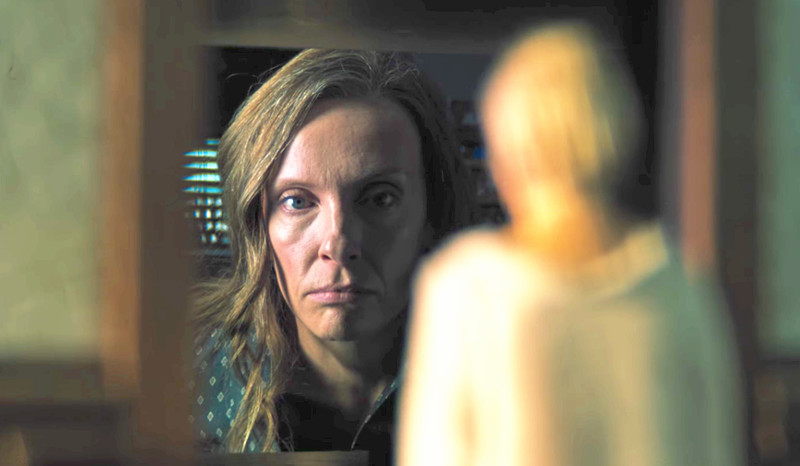
As prestige horror, writer-director Ari Aster makes a stirring and unforgettable debut with Hereditary, which also makes for one of the most discomfiting portrayals of family dysfunction you’re likely to ever see.
“In its seriousness and hair-raising craftsmanship, Hereditary belongs to a proud genre lineage,” writes the A.V. Club’s A.A. Dowd, adding “a legacy that stretches back to the towering touchstones of American horror, unholy prestige-zeitgeist classics like The Exorcist and Rosemary’s Baby.”
After the death of her reclusive grandmother, Annie Graham (Toni Collette) starts to see her family unravel as their mysterious past meshes with their chaotic and ever-fracturing present. Aster offers an unpredictable horror film that begins like a familiar haunted house movie before spiralling into the underworld; a vision so bleak, bloody, and compelling that fans of Ben Wheatley’s Kill List (2011) will be pumping their fists, when not cowering behind their popcorn, of course.
Shot with a meditative pace, one punctuated with deliberate camera movements and several, standout long takes (Kubrick comparisons will be unavoidable, but there’s much more emotion here), not to mention an absolutely chilling score from Colin Stetson, Hereditary builds and builds to the kind of Grand Guignol go-for-broke climax fright fans often ask for but so rarely receive. Not only does this film deliver genuine chills and thrills, it’s all done in a languid, artful measure that will have you crawling out of the theater afterwards in an awed daze. It’s the real deal and you’ll probably never look at dioramas the same way again, ever.
2. Mandy
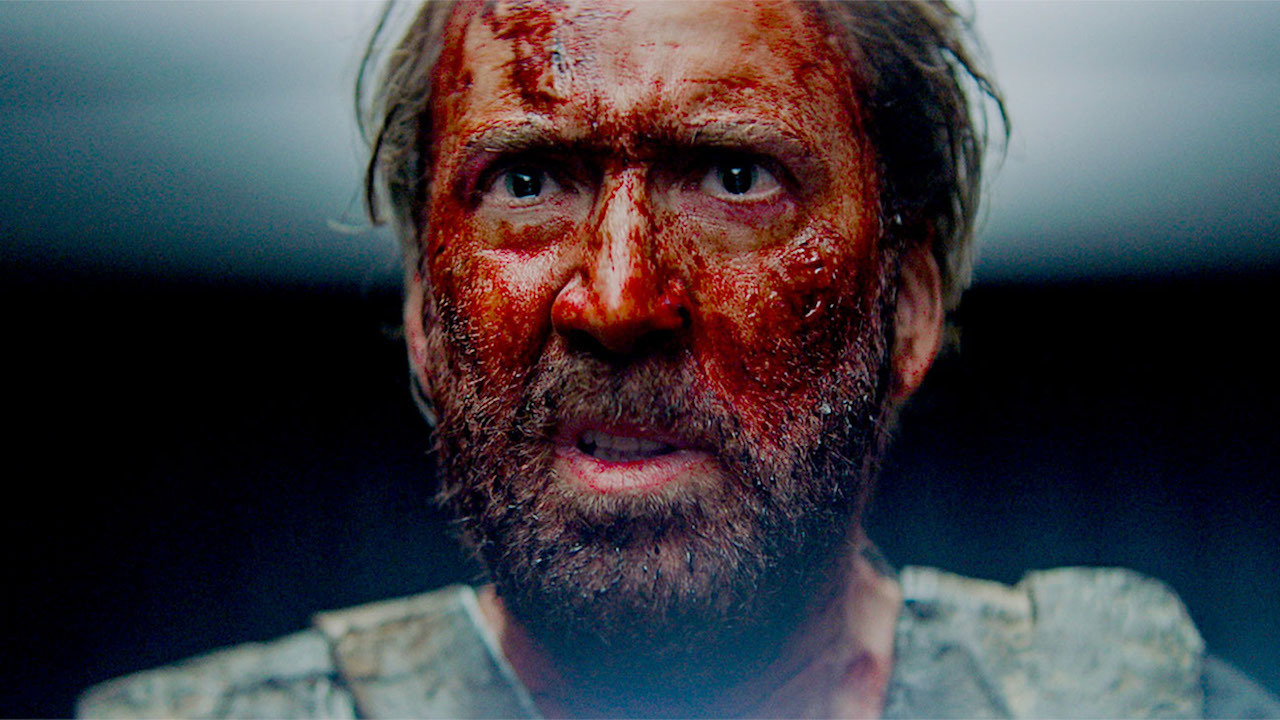
Panos Cosmatos follows up his Cronenberg-inflected sci-fi thriller Beyond the Black Rainbow (2010) with Mandy, a deeply personal film entwined in the most hallucinatory, messed up, heavy-metal-meets-80s-movie-mashup packaging imaginable. And when we say 80s movies, we’re talking Blue Velvet, Evil Dead 2, and Hellraiser here.
Set in 1983 somewhere in the Pacific Northwest near the Shadow Mountains, Red Miller (an absolutely insane Nic Cage) and his fantasy-obsessed artist girlfriend Mandy Bloom (Andrea Riseborough, brilliant) eke out a peaceful existence. But their idyll is short lived in this ultra-violent fantasy of revenge and bloodlust.
Conventional definitions of good and bad go by the wayside, but it feels like Cosmatos has made exactly the kind of uncompromising, obsessive, stoner prayer to the church of psycho cinema he’s always dreamed of.
Cage is gloriously off the chain, inhabiting a blood-speckled world of alien sunsets, King Crimson forests, Christ-dreading demon bikers, drug-crazed freaks, psychedelic insects, and Cheddar Goblins. Bolstered by a haunting Jóhann Jóhannsson score, stunning visuals (including some astounding animated dream sequences), Mandy is an extreme genre journey that beautifully weds grindhouse and arthouse in startling and stunning ways. Miss this movie at your peril.
1. Suspiria
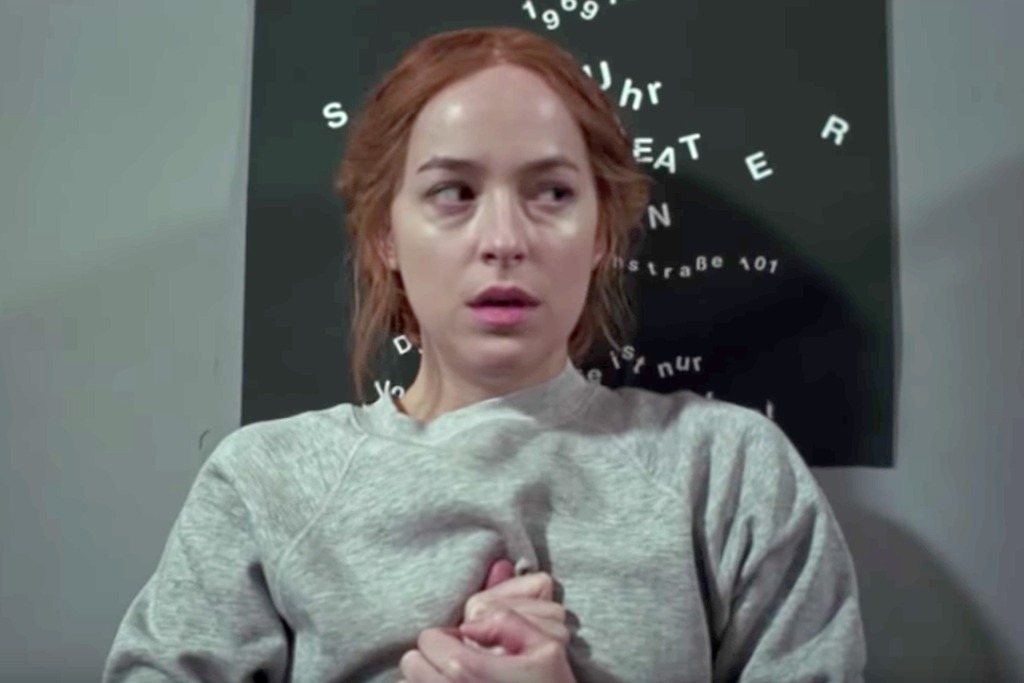
An unsettling and artfully transgressive tribute to the classic giallo, Luca Guadagnino’s Suspiria (inspired, as everyone knows, by Dario Argento’s 1977 showpiece) isn’t the colorful homage many expected.
Sure, it’s a metafictional elucidation of sorts, and there are flashes here and there of Argento’s transfixing original, but in the hands of I Am Love (2009) and Call Me By Your Name (2017) director Guadagnino the fractured, lacerated and luridly suggestive imagery––including the ecstatic and delirious use of dance––gets into your capitulum in ways Argento never envisaged. This is an altogether different beast, but at the same time is extraordinarily complimentary to the original.
Guadagnino and screenwriter David Kajganich are faithful to the wider narrative that Argento developed in the Three Mothers Trilogy (Suspiria, Inferno [1980] and The Mother of Tears [2007]), and also explore not just art house modes of frightening aesthetic but also body horror in ways that the Baron of Blood himself, David Cronenberg, would flagrantly approve.
Dakota Johnson is mesmeric as the young and hexed American dancer Susie Bannon, transposed to 1970s punk-era Berlin to audition for the world-famous Helena Markos Dance Company.
Drubbed by Gothic downpours, the academy is quick to embrace Susie, who is quickly placed as the new lead dancer after lead choreographer Madame Blanc (Tilda Swinton) takes a shine to her. But for what sinister purpose? And why did the now missing student Patricia Hingle (Chloë Grace Moretz) cryptically divulge to her psychotherapist, Josef Klemperer (Swinton, again), her bent belief that the school is run by a cruel coven of witches?
Bloodcurdling and cryptic, Suspiria moves with the assured grace of a 24-carat dance picture that will contort into something ferociously gruesome in a heartbeat (the sequence where Susie’s balletic conjury tears apart the body of another student is unforgettable, utterly visceral, and only the beginning of so much more to come).
A fever dream of matriarchal madness, the occult, doomed love, and dark secrets, Suspiria is a highly baroque, suggestive, and poetic study of corruption, disturbance, motherhood, national guilt, savagery and so much more. It’s the horror film of the year, and maybe even the decade.
Author Bio: Shane Scott-Travis is a film critic, screenwriter, comic book author/illustrator and cineaste. Currently residing in Vancouver, Canada, Shane can often be found at the cinema, the dog park, or off in a corner someplace, paraphrasing Groucho Marx. Follow Shane on Twitter @ShaneScottravis.